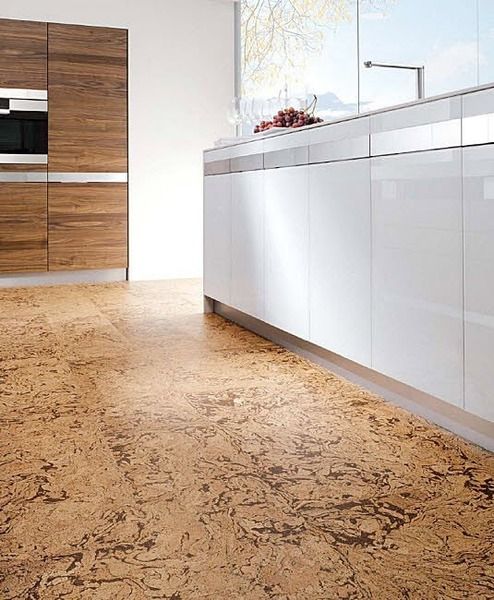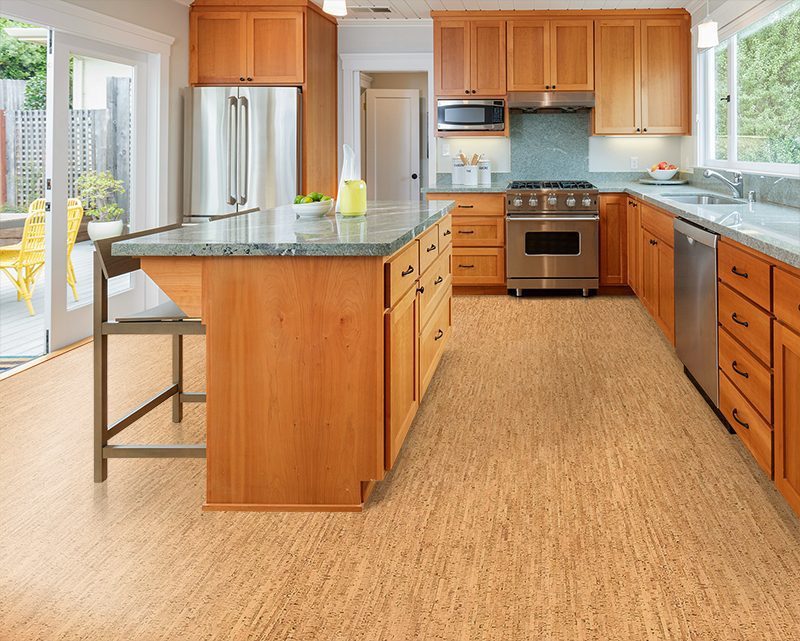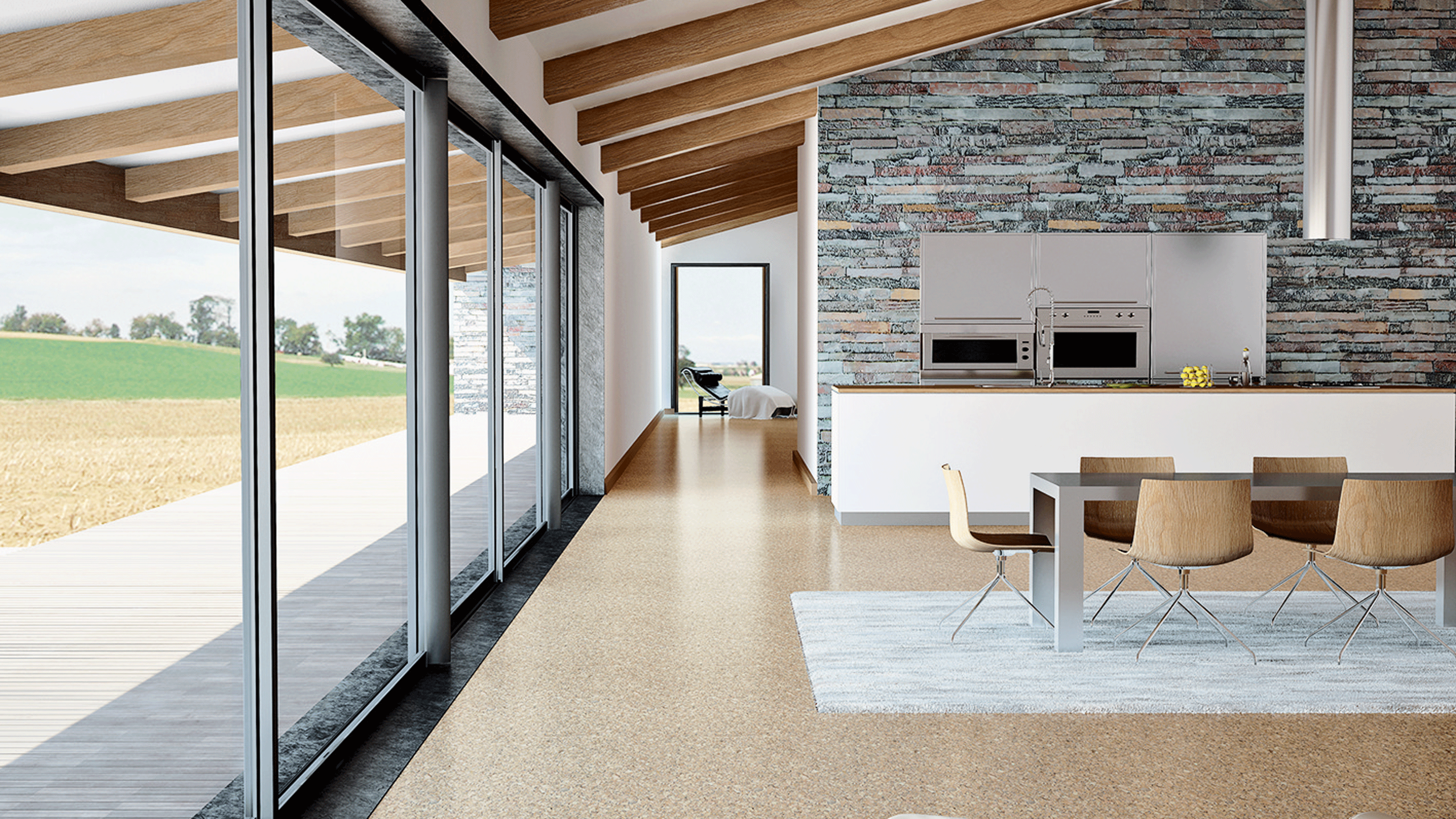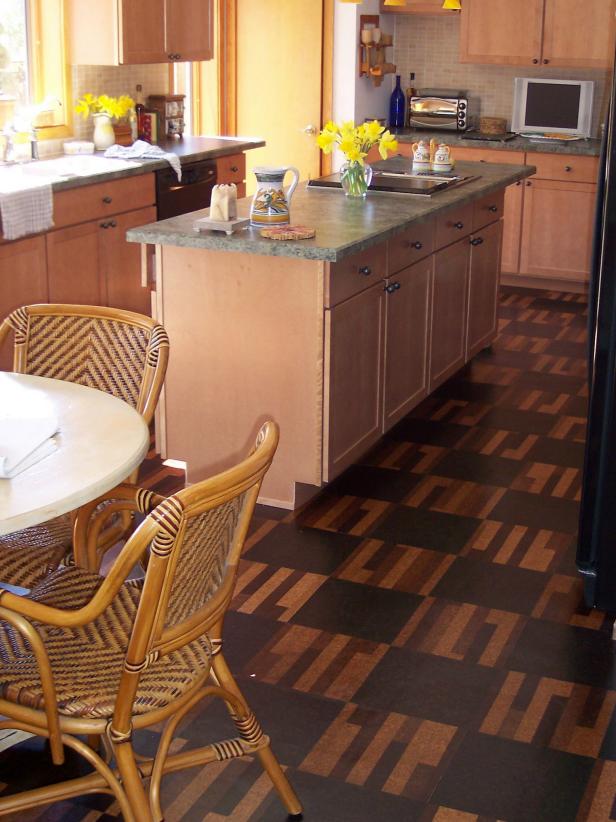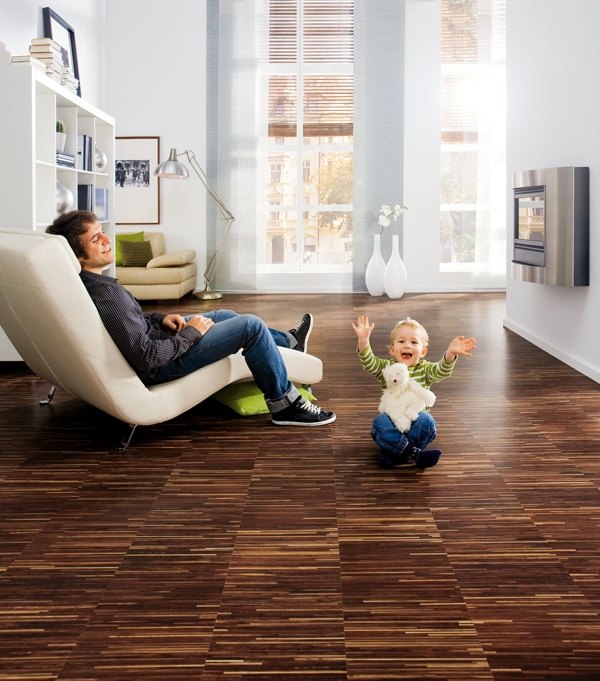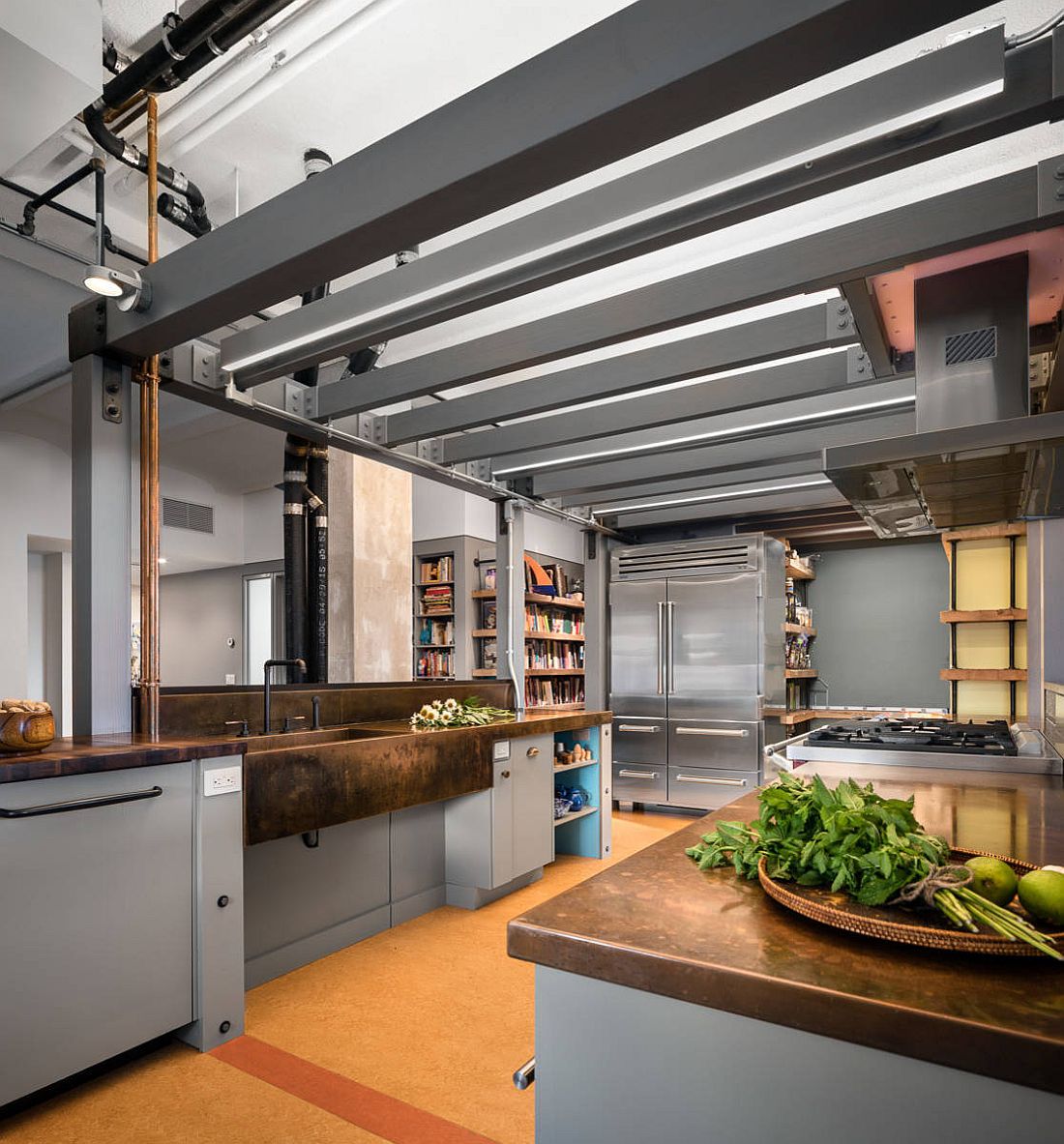Why Choose Cork Flooring?
Cork flooring is growing in popularity for both its aesthetic appeal and functional benefits. Known for its natural warmth and unique texture, cork offers an eco-friendly and comfortable alternative to traditional flooring options. As a natural product derived from the bark of the cork oak tree, it’s a sustainable choice that brings character and performance to any room.
- Comfort and Cushioning: One of the standout features of cork is its softness underfoot. Cork flooring has a natural “give” that makes it more comfortable to walk and stand on for extended periods. This cushioning effect is ideal for spaces like kitchens where you’re often on your feet and reduces strain on joints.
- Noise Reduction: Cork is a naturally sound-absorbing material, making it ideal for reducing noise within and between rooms. This benefit is particularly useful in multi-story homes or apartments where sound transmission can be a concern. Cork’s sound-dampening qualities also make it a great choice for home offices, libraries, and bedrooms.
- Thermal Insulation: Cork’s natural insulating properties make it warm to the touch, unlike other hard flooring options like tile or stone. This can reduce heating costs, especially in colder climates, by helping to retain heat within a room. It also maintains a comfortable temperature for bare feet.
- Sustainability and Eco-Friendliness: Cork is harvested from the bark of the cork oak tree without harming the tree, which regenerates its bark every nine years. This renewable aspect, combined with cork’s biodegradable nature, makes it a highly sustainable option, especially compared to synthetic flooring materials.
- Durability and Resilience: While cork is soft underfoot, it’s highly resilient. It can withstand moderate foot traffic and naturally resists damage from minor impacts. Cork can also be sealed to improve its resistance to scratches and stains, further extending its lifespan.
- Hypoallergenic and Mold-Resistant: Cork is resistant to mold, mildew, and common allergens, making it a smart choice for households with allergy sufferers. Its natural properties prevent dust and hair from sticking, reducing allergen buildup and simplifying cleaning.
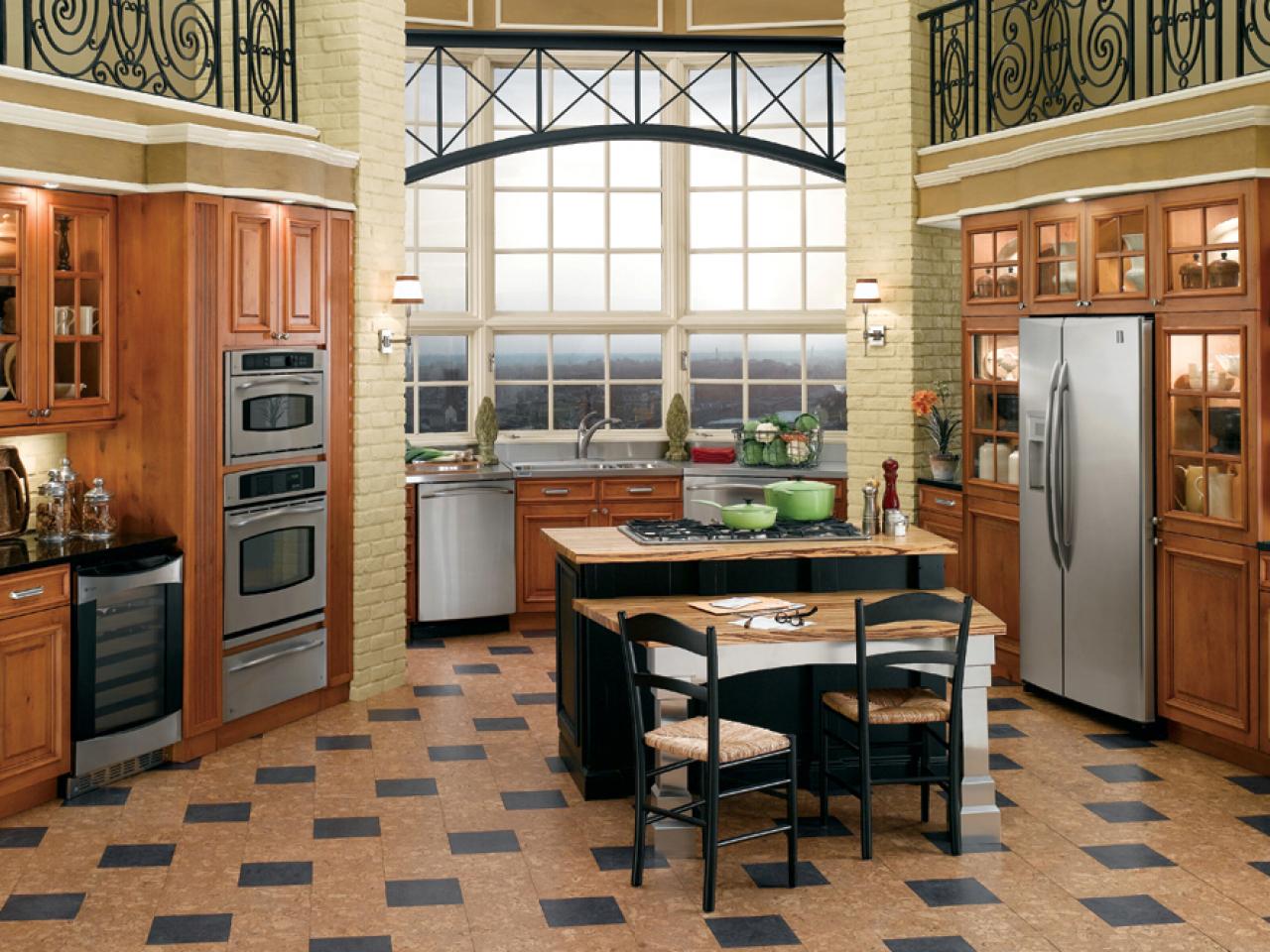
Types of Cork Flooring
Cork flooring is available in a range of formats to suit different design preferences and functional needs. Whether you’re looking for a seamless, continuous look or a tile-based pattern, understanding the different types of cork flooring can help you make the right choice for your space.
Cork Tiles: Cork tiles are a popular option because of their versatility and ease of installation. They come in various sizes and thicknesses and can be arranged in patterns for a custom look. Cork tiles are ideal for DIY projects, as they’re generally easier to install and can be glued directly to a subfloor.
Cork Planks: Cork planks, which resemble traditional wood planks, offer a more continuous and seamless appearance than tiles. They’re perfect for creating a natural flow between rooms and are often used in spaces where a clean, expansive look is desired. Cork planks can also be found in click-lock varieties, allowing for a floating installation.
Sheet Cork Flooring: Sheet cork is less common but provides a unique option for those seeking a seamless, continuous cork floor. It’s generally installed by professionals due to the difficulty of handling large sheets, but it creates a uniform look with fewer visible seams, ideal for modern aesthetics.
Floating Cork Floors: Floating cork floors are an innovative option that allows for easier installation without glue or nails. These floors are designed with interlocking planks, similar to laminate flooring, making them ideal for areas where adhesive use may be limited. Floating floors can be installed over existing floors, saving time and labor.
Vinyl-Cork Composite: Vinyl-cork hybrid floors combine the best of both worlds: the warmth and sustainability of cork with the durability of vinyl. These floors have a cork underlayer topped with a vinyl surface, making them more resistant to scratches and moisture while still retaining some of cork’s natural insulation.
Engineered Cork Flooring: Engineered cork combines cork with a core of plywood or other composite material, creating a product that offers additional stability. This is a good choice for areas where a stable base is needed, such as basements, or spaces where moisture may be a concern.
Cork Floor Design Styles for Every Home Aesthetic
Cork flooring can suit a wide variety of design aesthetics, from rustic and natural to modern and elegant. By exploring different textures, finishes, and patterns, you can find cork flooring that complements any home style.
Natural Cork Look: For those who appreciate a classic look, natural cork in its original hue offers an earthy, organic appearance that highlights cork’s unique grain and texture. Natural cork is perfect for creating a warm and cozy ambiance, especially in neutral or earth-toned rooms.
Stained Cork: Staining cork can create various color options, from deep walnut tones to light, creamy shades. This versatility allows cork to match wood finishes or complement other decor elements, making it suitable for both contemporary and traditional spaces.
Textured Cork: Some cork floors come with textured finishes, adding visual interest and a unique feel underfoot. Textured cork is ideal for rustic or farmhouse-style interiors, adding an organic look that blends well with other natural materials like wood and stone.
Patterned Cork: For those who love a bit of flair, patterned cork flooring is available in intricate geometric patterns, often created by arranging cork tiles in specific ways. These patterns range from simple layouts, like herringbone, to more elaborate designs that act as a focal point in a room.
Polished Cork: A high-gloss finish gives cork flooring a polished and modern look, making it suitable for minimalist and contemporary spaces. Polished cork is reflective, making spaces feel larger, and is often easier to clean due to its smooth surface.
Antiqued or Distressed Cork: This style of cork flooring gives the appearance of age and character, with intentional wear marks that mimic the look of reclaimed wood. Antiqued cork is perfect for vintage-inspired interiors or spaces with an eclectic mix of furnishings.
Popular Colors and Patterns in Cork Flooring
Cork flooring is available in a wide array of colors and patterns that offer design flexibility. From warm neutrals to bold, dyed options, the colors and patterns of cork can add personality and style to any room.
Natural Earth Tones: Many homeowners choose cork in natural shades of beige, tan, and brown for an organic, earthy look. These colors are versatile and can complement a wide variety of decor styles, from rustic to modern.
Bold and Dyed Colors: Cork can be dyed in virtually any color, making it possible to match your floor to your home’s color scheme. Dyed cork is a great option for those who want to make a statement with colors like teal, green, or red.
Speckled Patterns: Cork’s natural texture often creates a speckled or mottled appearance, adding depth and interest to the floor. These speckled patterns can also help hide minor dirt and wear, making them practical for high-traffic areas.
Geometric Patterns: Some cork tiles come in geometric patterns that create a unique, modern look. These can include chevron, herringbone, and diamond patterns, adding a sophisticated touch to any room.
Light and Dark Contrast: Dark-stained cork flooring can create a dramatic look, especially in rooms with contrasting light walls. Conversely, light-colored cork adds brightness and can make small spaces feel larger and more open.
Multi-Colored Cork: For a more eclectic style, multi-colored cork tiles can be combined to create a vibrant, mosaic-like floor. This approach is especially effective in artistic spaces, children’s rooms, or any area where a lively, playful design is desired.
Installation Options: Floating vs. Glue-Down Cork Floors
Choosing between floating and glue-down cork floors depends on the room, desired look, and ease of installation. Both have unique advantages and are suited for different applications.
Floating Cork Floors: Floating floors use click-lock planks that are installed over an underlayment without adhesive. They are relatively easy to install, making them ideal for DIYers. Floating floors can also be placed over existing flooring, making them a cost-effective option.
Glue-Down Cork Floors: Glue-down cork floors require adhesive application and are typically installed by professionals. This method provides a more permanent solution with excellent stability, especially in high-traffic areas.
Suitability for Moisture-Prone Areas: Glue-down cork is better suited for moisture-prone areas like kitchens or bathrooms because it’s more resistant to shifting. Floating floors may be affected by high moisture levels if not installed carefully with a moisture barrier.
Cost and Time Considerations: Floating cork floors generally cost less to install and take less time. Glue-down installations, however, involve more labor and adhesive costs but provide a stable, long-lasting solution.
Resale Value: Glue-down floors are often seen as a more “permanent” solution, which may add to the home’s resale value. Floating floors are still high-quality but may not be viewed as a permanent feature.
Ease of Replacement: If individual tiles or planks get damaged, floating floors are easier to replace, as they can be disassembled and reassembled. With glue-down floors, damaged tiles require more effort to remove and replace.
Cork Flooring in Different Rooms: Best Use Cases
Due to its unique properties, cork flooring works well in a variety of spaces. Here’s a look at some of the best rooms for cork flooring based on its strengths.
Living Rooms: Cork’s warmth and comfort make it ideal for living areas, where people often walk barefoot or lounge on the floor. Its sound-dampening qualities also contribute to a quieter, more serene living space.
Bedrooms: The softness of cork is perfect for bedrooms, offering comfort and a cozy feel. Additionally, cork’s hypoallergenic properties contribute to better air quality in spaces where people spend significant amounts of time.
Kitchens: Cork is durable enough to handle moderate foot traffic in kitchens and is resilient to minor spills if properly sealed. The comfort underfoot is especially appreciated when standing for extended periods.
Home Offices: The noise reduction provided by cork makes it a great option for home offices, helping to keep distractions to a minimum and create a conducive work environment.
Playrooms: For families with young children, cork’s cushioning effect makes it safer for play areas where falls might occur. Its natural resistance to mold and allergens also makes it a healthier choice for kids.
Bathrooms and Laundry Rooms: While not traditionally used in wet areas, properly sealed cork can work in bathrooms and laundry rooms. However, it’s essential to use a waterproof sealant and regular maintenance to prevent moisture damage.
How to Care for and Maintain Cork Floors
To keep cork flooring looking its best, routine maintenance and a few protective measures are essential. With proper care, cork floors can remain beautiful and functional for many years.
Regular Sweeping and Vacuuming: Regularly sweeping or vacuuming cork floors helps remove dust and debris that can cause scratches over time. A soft-bristle broom or a vacuum without a beater bar is ideal to avoid damaging the surface.
Wiping Spills Immediately: Cork is naturally moisture-resistant but can still be damaged by standing water. Wipe up spills immediately to prevent them from soaking in and causing stains or swelling.
Applying a Protective Sealant: Sealing cork floors helps protect them from moisture, stains, and general wear. Reapplying the sealant every few years, or as needed, keeps the floor’s surface strong and resilient.
Using Furniture Pads: Cork floors can be scratched by heavy furniture, so it’s recommended to use felt pads or furniture protectors. These pads prevent direct contact between furniture and floor, helping to minimize dents and scratches.
Avoiding Harsh Cleaners: Mild, pH-neutral cleaners are best for cork flooring. Harsh chemicals and abrasive scrubbers can damage the floor’s finish and compromise the sealant, leading to faster wear.
Repairing Minor Damage: Cork flooring is relatively easy to repair. Small scratches can often be buffed out or covered with a bit of wax. If a tile or plank is severely damaged, it can be replaced without having to redo the entire floor.
Cork Kitchen Floors
Different Types of Cork Flooring
Cork floor – a practical alternative to wood floors
Sustainable Style: Cozy Cork Floor Ideas for your Modern Kitchen
Cork Flooring Is an Environmentally Friendly Choice for Interior
Related Posts:
